Which breed makes the best gundog? The pros and cons of labradors, spaniels, terriers and more
Whether you own labradors, springers, cockers or a mix of all three, debate over which gundog is best has raged for centuries. Katy Birchall asks which breed works for you.
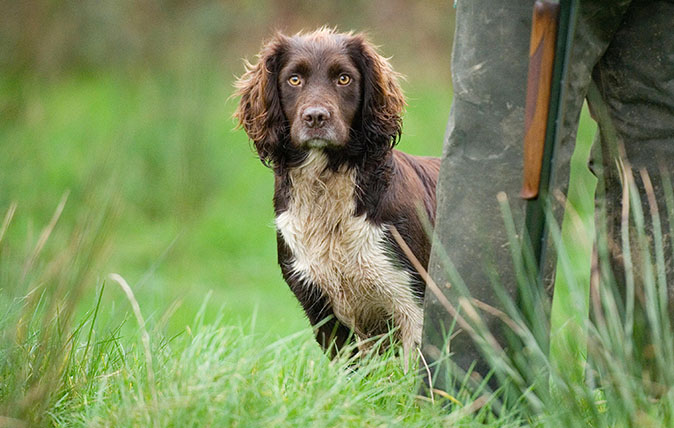

Few subjects spark more passion or generate such lively debate as one’s choice of gundog. Animated anecdotes, enthusiastic opinion and teasing flow on a shoot day and, if you really want to have some fun, be sure to ask the million-dollar question: ‘Which breed is best?’
With so many to choose from today and with each breed boasting its own particular merits, it’s a question that’s nearly impossible to answer – the sensible response is that it depends on the work you want your dog to do.
Rationality aside, the general consensus tends to be that you should get whichever breed the person you’re talking to has. We canvassed opinion far and wide to give the pros and cons of the most popular choices – though in all truth, it’s less a matter of merit and more a matter of heart. As Lord Tottering would says of his gundog, ‘I love him more than my wife. Am I allowed to say that?’
The Labrador
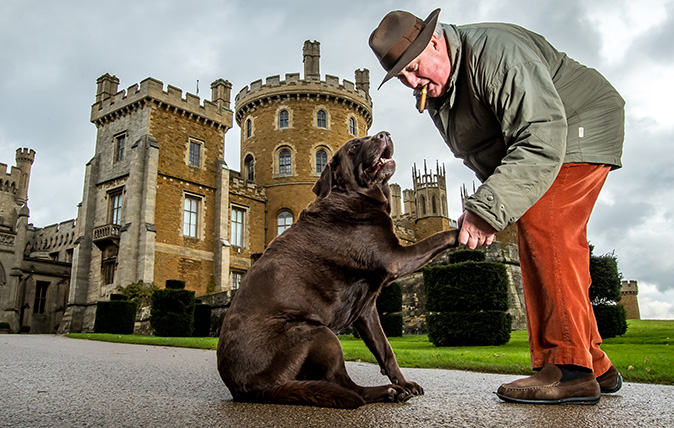
‘For someone like me, who doesn’t concentrate on his dog on a shooting day, one need look no further than a labrador,’ declares the Duke of Roxburghe, owner of a yellow working labrador.
‘Always at your side, [they’re] loyal and obedient – most of the time. My present dog, Polo, is the best I’ve had and endlessly in demand with pretty blondes to keep the line going.’
A devoted and much-loved companion, the labrador has many other high-profile fans – the Duchess of Devonshire has several and The Queen is a keen supporter. The latter is the handler of a band of highly respected working labradors and cockers from her kennels at Sandringham.
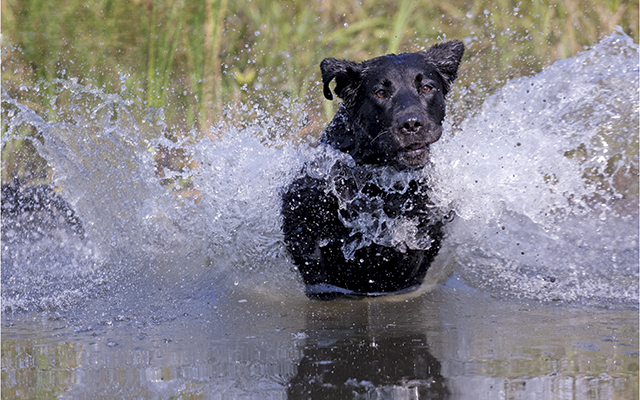
For Lt-Gen Sir Barney White-Spunner, former executive chairman of the Country-side Alliance, having three fox-red labradors at his side for a day’s shooting is what makes it complete. ‘I don’t always love them when they don’t come back, but I forgive them because there’s something about that unconditional labrador love that’s so constant and dependable,’ he admits.
Sign up for the Country Life Newsletter
Exquisite houses, the beauty of Nature, and how to get the most from your life, straight to your inbox.
Without question, the labrador is the most popular retriever breed, winning global favour for the ease with which it can be trained, its pleasing temperament and its versatility.
The Springer Spaniel
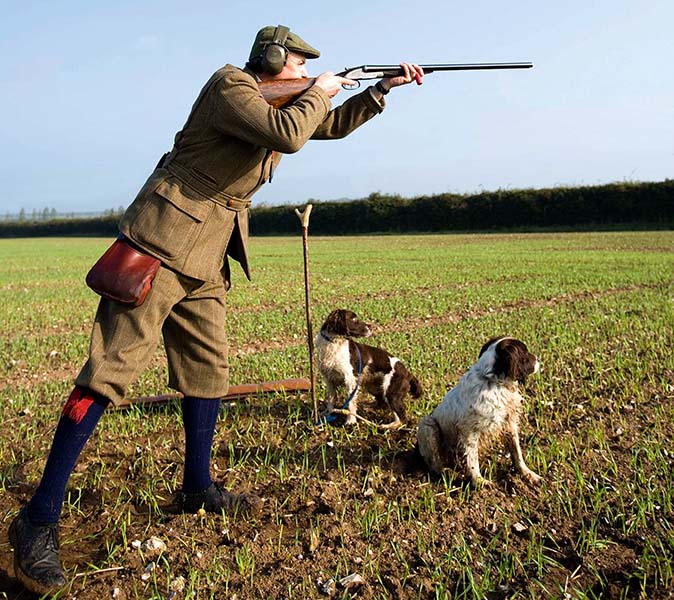
The shooting world’s commitment to the spaniel, in all its incarnations, is unstinting. Versatility is the key characteristic that Peter Moxon – the great trainer and Shooting Times gundog editor of 40 years’ standing – attributes to the English springer. To him, the springer is ‘the ideal rough shooter’s dog and, for anyone who requires an all-rounder, the breed will appeal as being most versatile’.
This hardy, fun dog ticks all the boxes – a natural hunter and retriever, it loves working in cover and water – and has long been the go-to breed for keepers, beaters, pickers-up and guns.
‘Initially, I chose English springer spaniels because my father had them, as did my four-greats-grandfather, Coke of Norfolk. We have a Gainsborough portrait of him with three liver-and-white ones,’ the Earl of Leicester explains. ‘They’re certainly easier to spot on a shooting field than black labradors.’
Lord Leicester has had four springers at Holkham Hall in Norfolk, each a son of the one before.
‘Our Irish terriers have been given heroic names from Antiquity, such as Hector and Jupiter,’ he elaborates. ‘The less-favoured kennel dogs, on the other hand, have names of gastropods or other small creatures – Snail, Slug, Shrimp and Scampi. We’re now celebrating the birth of Squid.’
The Cocker Spaniel
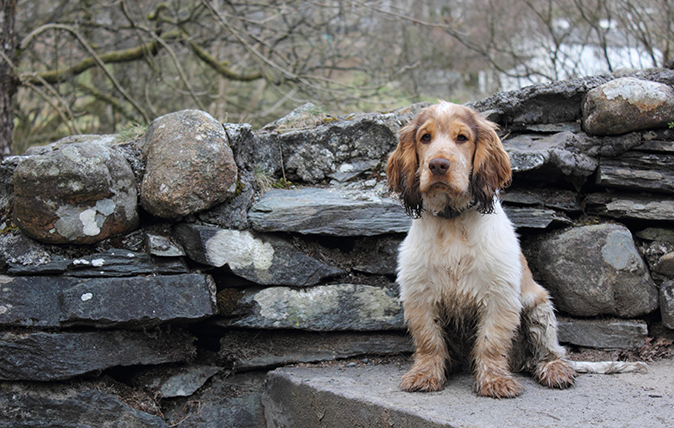
These days, the springer has some serious competition in the shape of the working cocker spaniel, which, according to Kennel Club registration figures, is nudging ahead in the popularity stakes. As advocates will happily tell you, the cocker spaniel is equally speedy and willing to please, with an endearing small stature that comes in handy both on and off the field.
‘They can fit through the smallest hole in a fence and sit in the car footwell and not be in the way,’ says Sir Edward Dashwood, who’s had cockers at West Wycombe for 20 years.
‘I just adore them. They’re so full of character and loving. Mine are never immaculate gundogs, but, usually, just well enough trained to get by and they are very effective when it comes to bringing back game.
‘They’ve all retrieved geese, but they really come into their own when hunting small game, such as woodcock. I’d like to say they could sit on a peg without being tethered, but that would be tempting fate.’
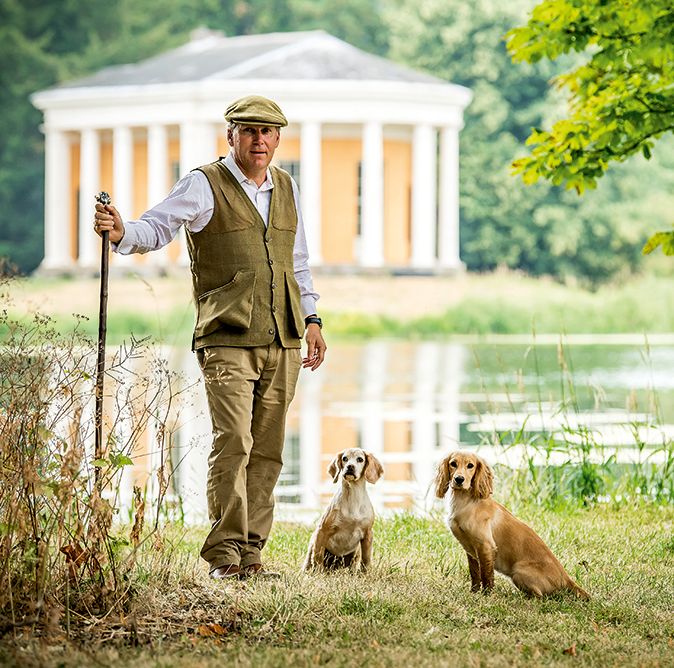
The Duke of Northumberland is also a fan of this gundog’s charm and boundless energy. ‘A cocker is ideal if you draw next to the more competitive sportsman,’ he says.
‘Before they can start to hoover up my birds, my spaniel, Hector, has already picked theirs. He only has one speed – very fast – and would rather pick a runner in the next county than a dead bird nearby. It’s no coincidence that he’s just had a storm named after him.’
The Sprocker Spaniel

Torn between springer and cocker? Consider, in that case, the sprocker, a breed that’s enjoyed a surge of popularity in recent years.
‘It wasn’t so long ago that spaniels were all the same, divided by weight and colouring, so a sprocker is simply turning the clock back,’ explains gundog writer David Tomlinson, who’s recently acquired one to join his springer.
‘The advantage of an outcross is fresh blood and, with luck, you get the best of both breeds. Most sprockers I’ve come across have been wonderful hunting dogs.’
Sprocker enthusiast Lynda Elliot agrees, emphasising the breed’s impressive record on the field. Her now-retired Rhum was renowned for his ability to retrieve runners.
‘His biggest claim to fame was finding a runner three fields from where it had been shot and bringing it back to his handler,’ she recalls.
‘A big cock pheasant and a wee sprocker wiped the eyes of the others and brought it back. Sprockers are great dogs, whether as a gundog, a pet, an agility dog or even an assistance dog.’
The Clumber Spaniel
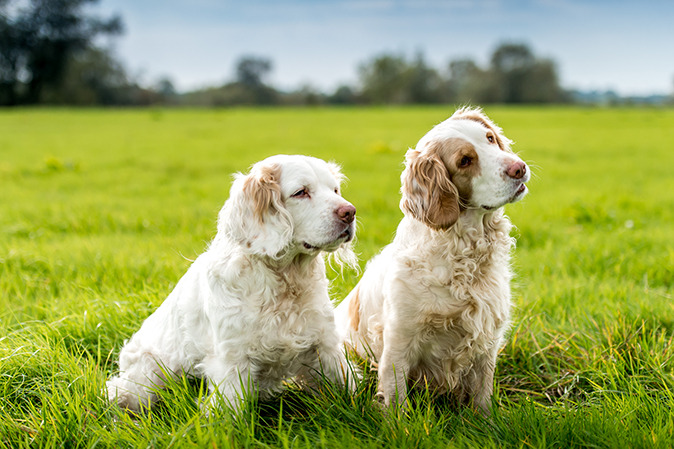
Other spaniel breeds mustn’t be overlooked, and a win for a Clumber in an any-variety field trial last year gave the breed a well-deserved publicity boost. Steady working dogs with a good nose, Clumbers have historically been firm favourites with royalty – George V and Prince Albert adored theirs and, today, The Princess Royal is president of the Working Clumber Spaniel Society.
‘I’ve had Clumbers for more than 15 years,’ says Viscount Gage, who has hosted WCSS shooting days at Firle Place, East Sussex. ‘They’re excellent companions and enthusiastic dogs.’
The Vizsla
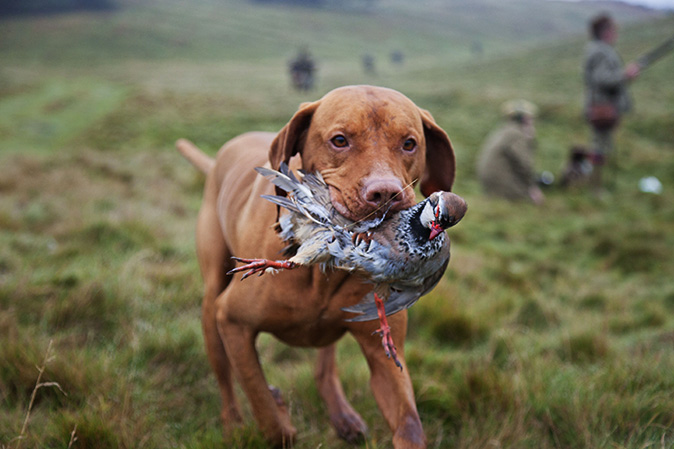
Over in the hunt, point and retrieve camp, the rising star is surely the Hungarian wire-haired vizsla – a diligent, intelligent and adaptable gundog that’s not bad to look at, either.
‘Whatever I say about them will be positive,’ enthuses Norfolk gamekeeper Tracie Rickman.
‘That may be because I’ve had so many wonderful experiences with them over the past 20 years. The ultimate has to be shooting over my own homebred dogs, whether on the peg, grouse moor, duck flighting or rough shooting, then coming home with that same dog and it’s a brilliant family pet.’
The German Shorthaired Pointer
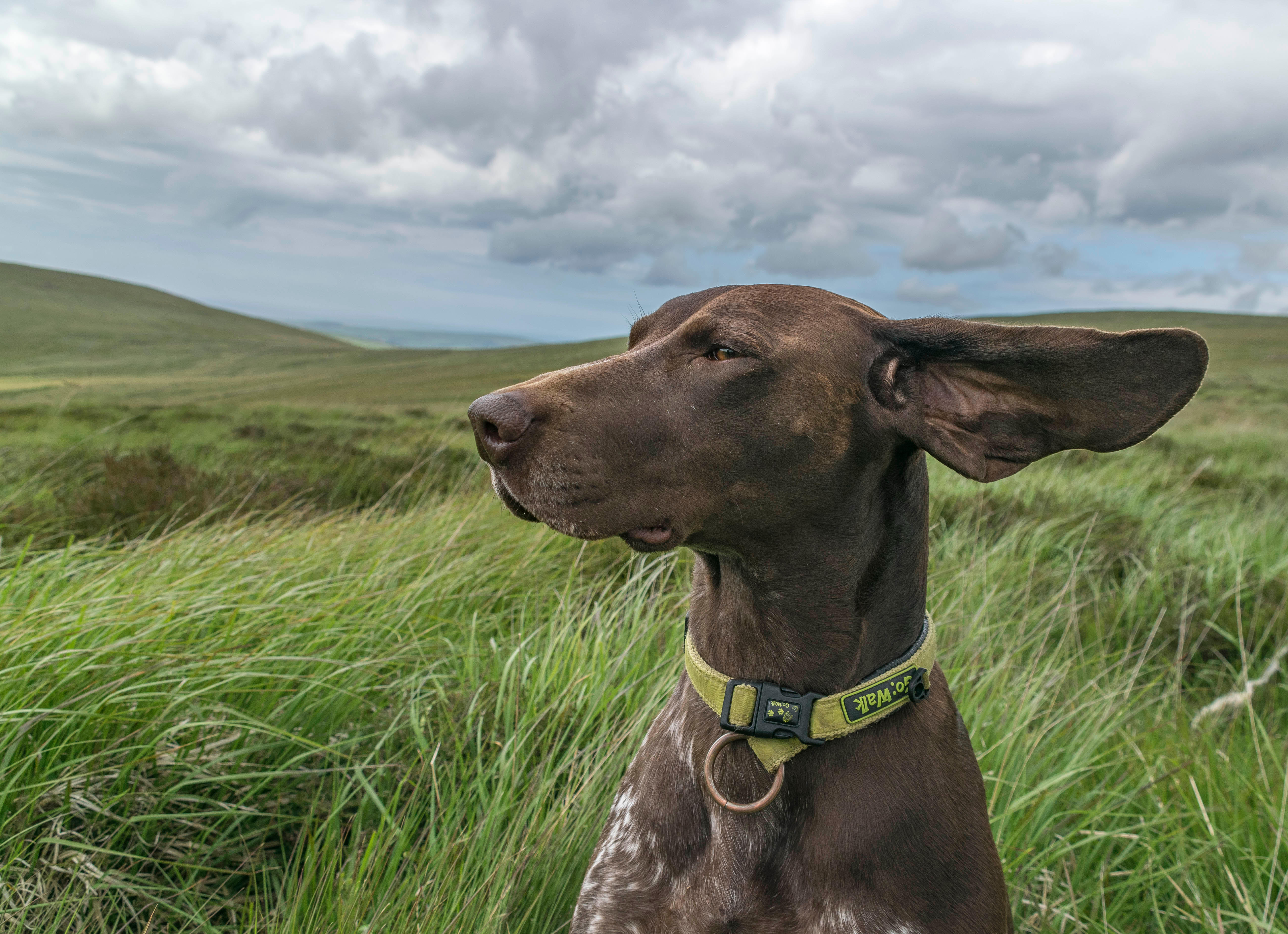
The German shorthaired pointer is another majestic dog that’s making waves, but, as Lucie Hustler, proud owner of five, will tell you, this isn’t a breed for the faint-hearted.
‘Put in the work and you get the reward,’ she says. ‘They can be independent, wilful and bordering on high-maintenance. The reward is a dog that can work relentlessly in all types of country, on all types of game, on every kind of shoot.
‘They can be as good as the best labrador, the best spaniel and the best pointer, all rolled into one.’
The Terrier
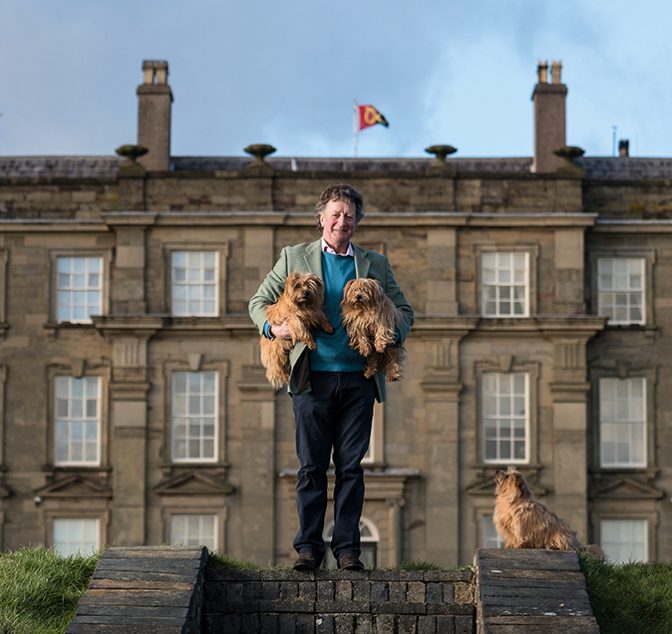
Finally, it would be criminal to overlook the terrier as a sporting dog. Lord Stafford is the proud owner of three generations of Norfolk terrier – Toots, Tinker and Tubby – which often accompany him shooting.
‘They just have tremendous attitude,’ he eulogises. ‘They’re obedient and they love the day. On a grouse moor, they’re like dolphins – one moment you see them, the next you don’t.’
He does, however, add a note on their lack of ground clearance: ‘They need a good shower when they get home.’
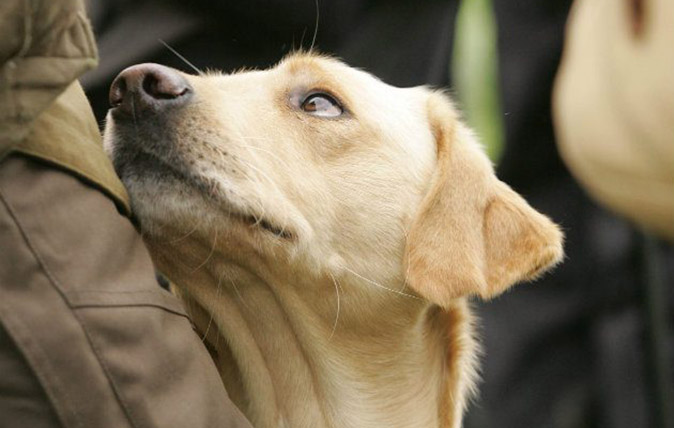
Credit: Shooting UK
Like Eton or Harrow, but for dogs: Britain's greatest gundog schools
Breeding certainly counts in gundogs – but it counts for nothing if your new puppy receives a poor education
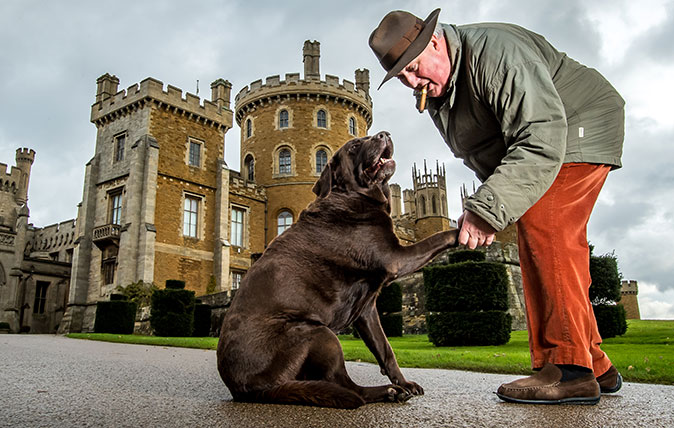
Dukes and their dogs: Why Britain's aristocracy are just as mad about their canine friends as the rest of us
Stylish canines have long been a duke's or duchess's best friend, as Matthew Denison found out.
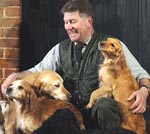
Faithful friends – The Queen and her dogs
The Queen's love for her dogs is traced by Paula Lester
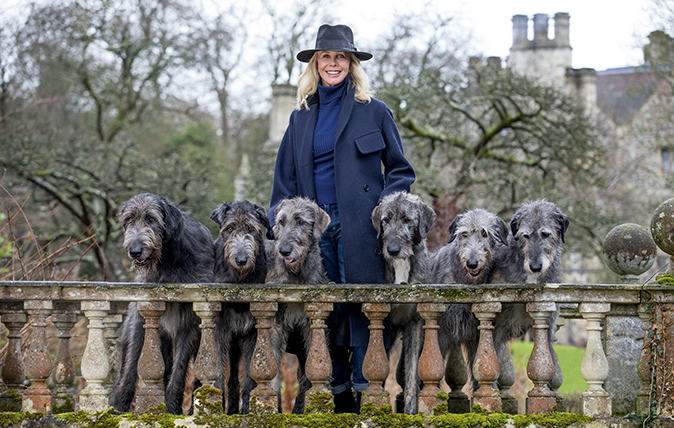
The Irish Wolfhound: Why the archetypal ‘gentle giant’ was a favourite of the aristocracy, John F. Kennedy and now, Trudie Styler
Mythical and magnificent, yet gentle and intensely loyal, the Irish wolfhound can only be described in superlatives, finds Flora Watkins.
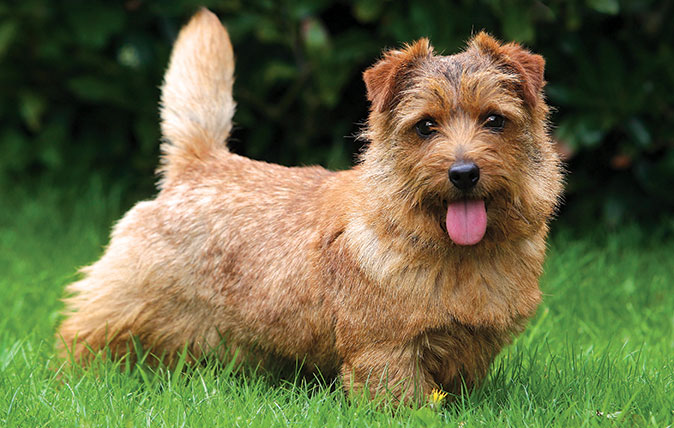
Credit: bob langrish / Alamy Stock Photo
Let’s ’ear it for the Norfolk terrier, the dog that can't help but cheer you up
These feisty little dogs, the smallest of the terrier family, are short of leg, but long on personality, finds Kate
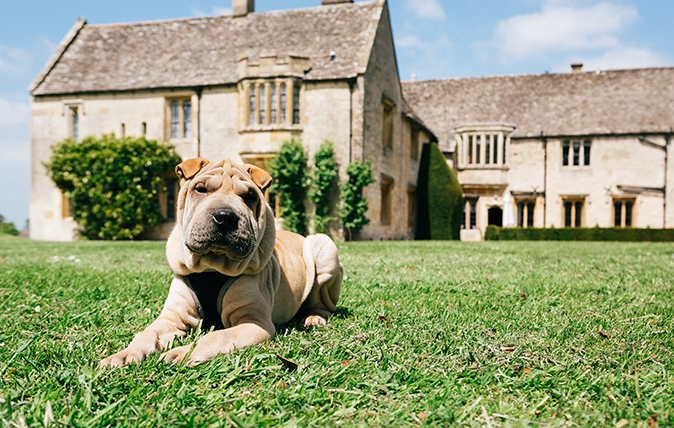
Meet Britain's best hotel animals: The quack pack, the doggy doorman and the moggy maître d'
Emma Hughes gets to know the dogs, cats and ducks bringing animal magic to some of Britain’s best hotels.
-
 Five beautiful homes, from a barn conversion to an island treasure, as seen in Country Life
Five beautiful homes, from a barn conversion to an island treasure, as seen in Country LifeOur pick of the best homes to come to the market via Country Life in recent days include a wonderful thatched home in Devon and a charming red-brick house with gardens that run down to the water's edge.
By Toby Keel Published
-
 Shark tanks, crocodile lagoons, laser defences, and a subterranean shooting gallery — nothing is impossible when making the ultimate garage
Shark tanks, crocodile lagoons, laser defences, and a subterranean shooting gallery — nothing is impossible when making the ultimate garageTo collectors, cars are more than just transport — they are works of art. And the buildings used to store them are starting to resemble galleries.
By Adam Hay-Nicholls Published
-
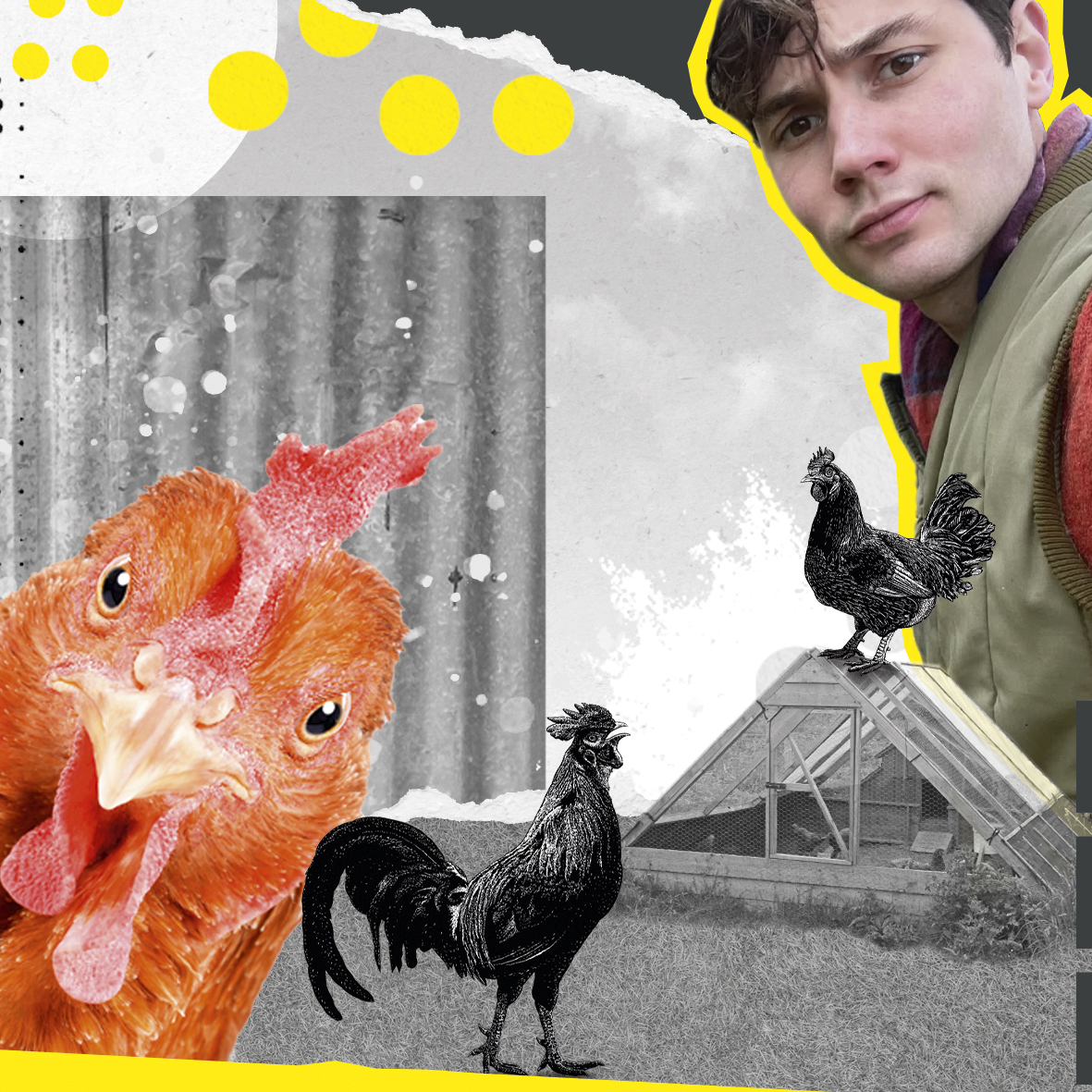 Arthur Parkinson: I am a cleaner, security guard and matron to my happy hens
Arthur Parkinson: I am a cleaner, security guard and matron to my happy hensIn his first regular chicken-keeping column for ‘Country Life’, Arthur Parkinson introduces his brood and touches on the importance of good housekeeping.
By Arthur Parkinson Published
-
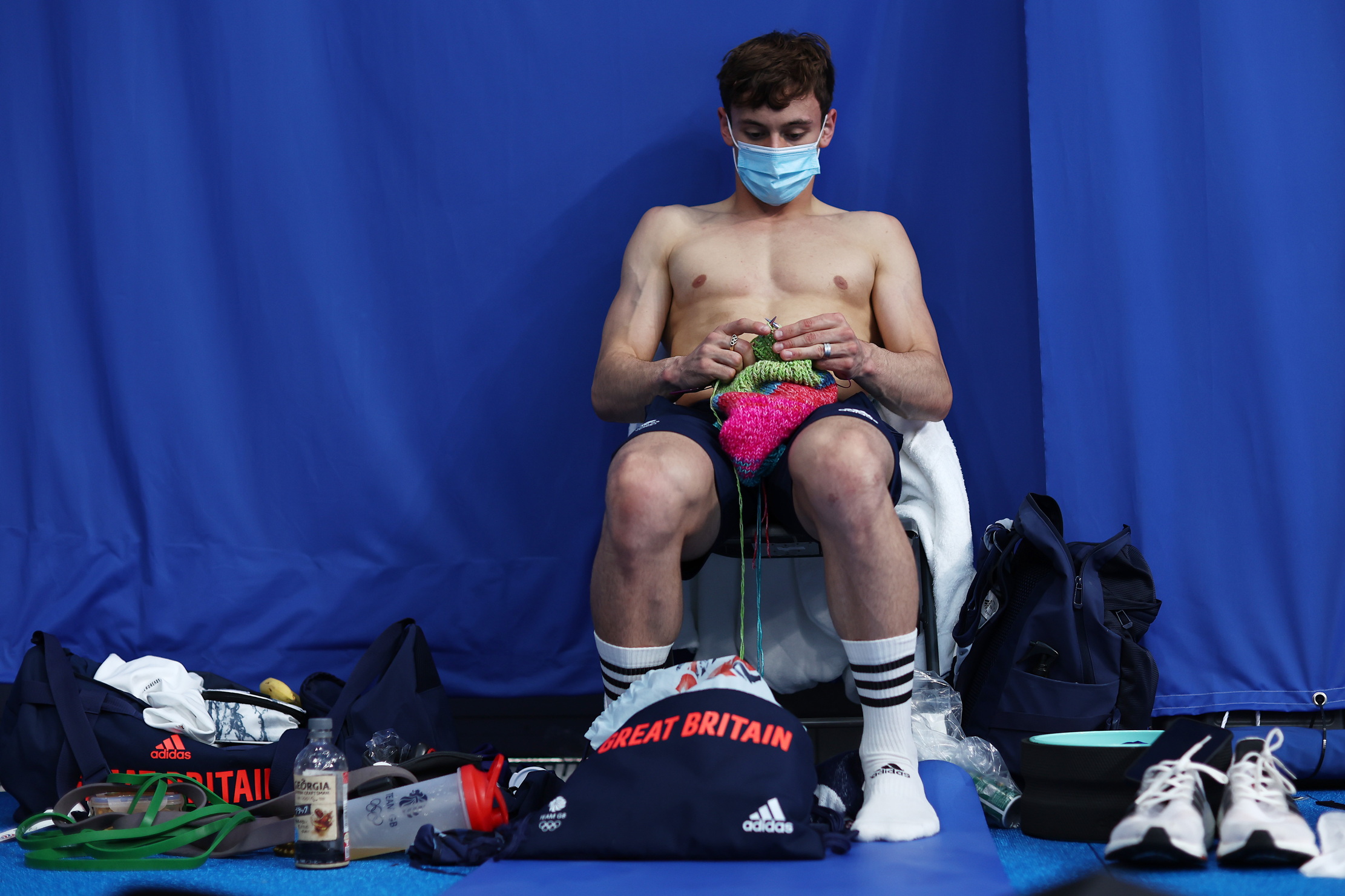 Is anyone more superstitious than a sports star?
Is anyone more superstitious than a sports star?When it comes to worrying about omens and portents, nobody gets quite so worked up as our sportsmen and women.
By Harry Pearson Published
-
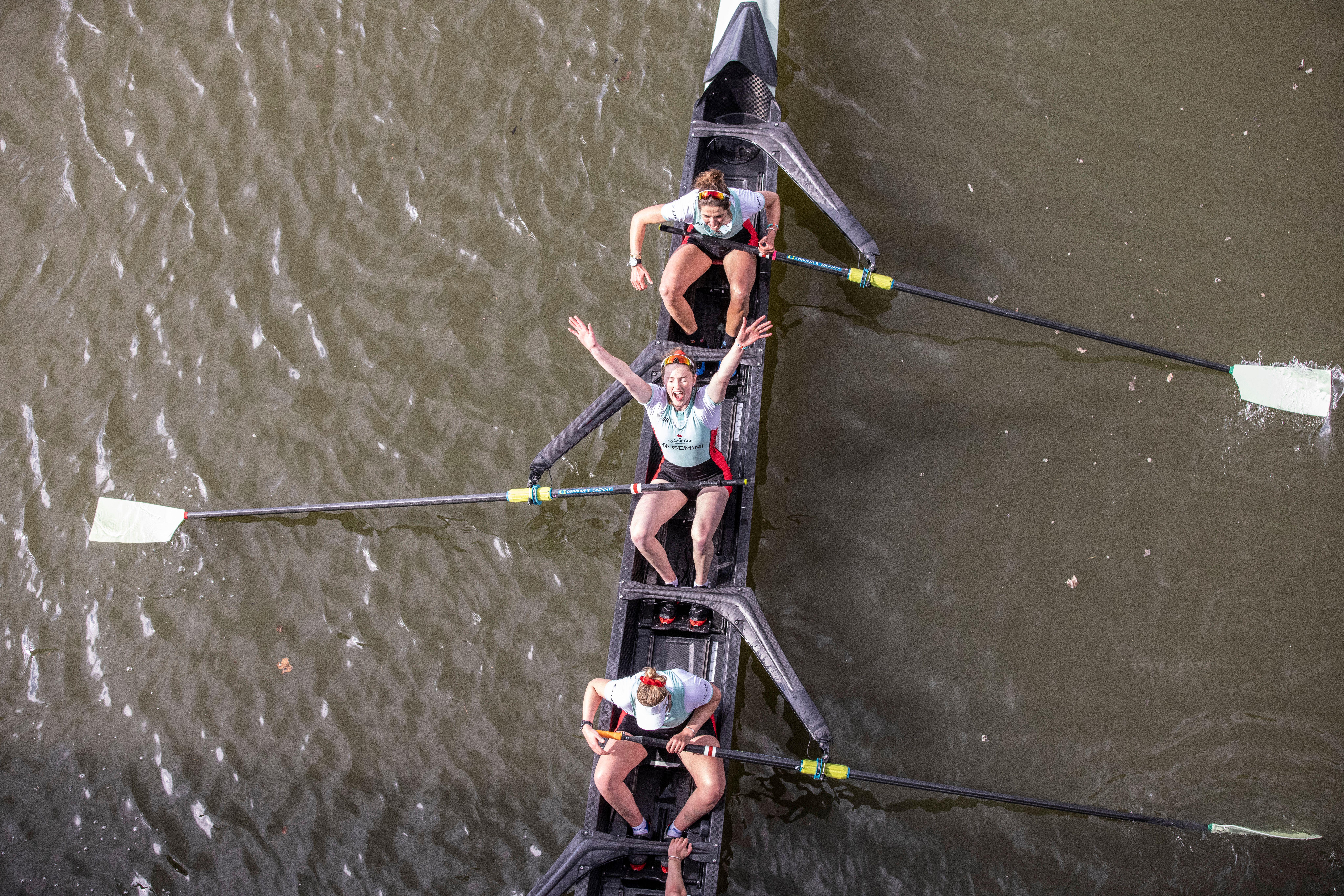 Everything you need to know about one of sport's most gruelling rivalries
Everything you need to know about one of sport's most gruelling rivalriesThis year's Boat Race is expected to play out to a global audience of 100million.
By Amie Elizabeth White Published
-
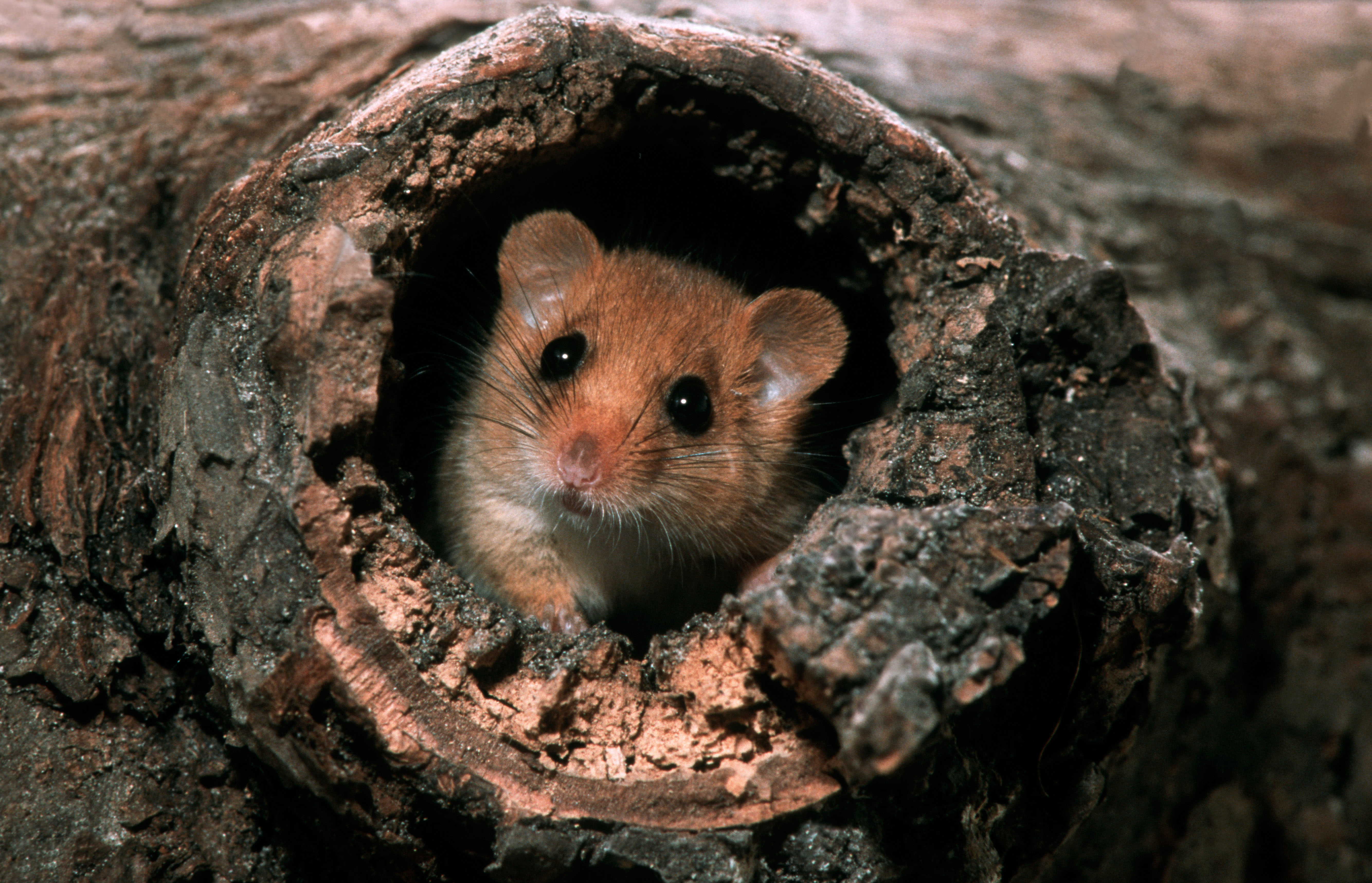 The humble hazel dormouse — 'the flagship species of the health of our countryside'
The humble hazel dormouse — 'the flagship species of the health of our countryside'The sleepy and very sweet hazel dormouse is one of Britain's rarest mammals.
By Jack Watkins Published
-
 The grass is always greener: Follow in the footsteps of Sir Andy Murray and play in The Giorgio Armani Tennis Classic
The grass is always greener: Follow in the footsteps of Sir Andy Murray and play in The Giorgio Armani Tennis ClassicThere’s no better time of year than the summer grass court tennis season.
By Rosie Paterson Published
-
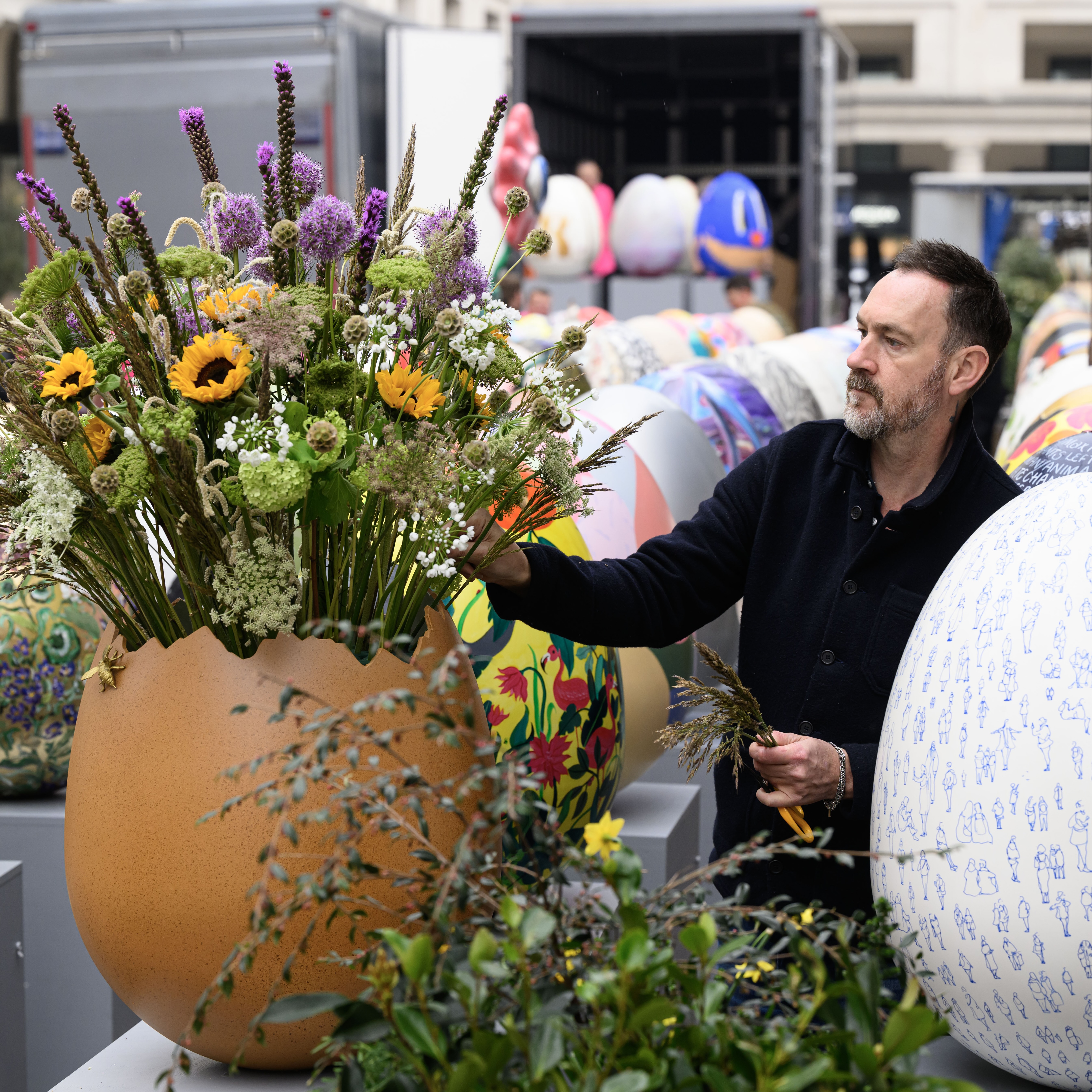 You've gotta catch them all: Everything you need to know about London's giant Easter egg hunt
You've gotta catch them all: Everything you need to know about London's giant Easter egg huntFortnum & Mason, Anya Hindmarch and Chopard are among the companies that have lent a creative hand.
By Amie Elizabeth White Published
-
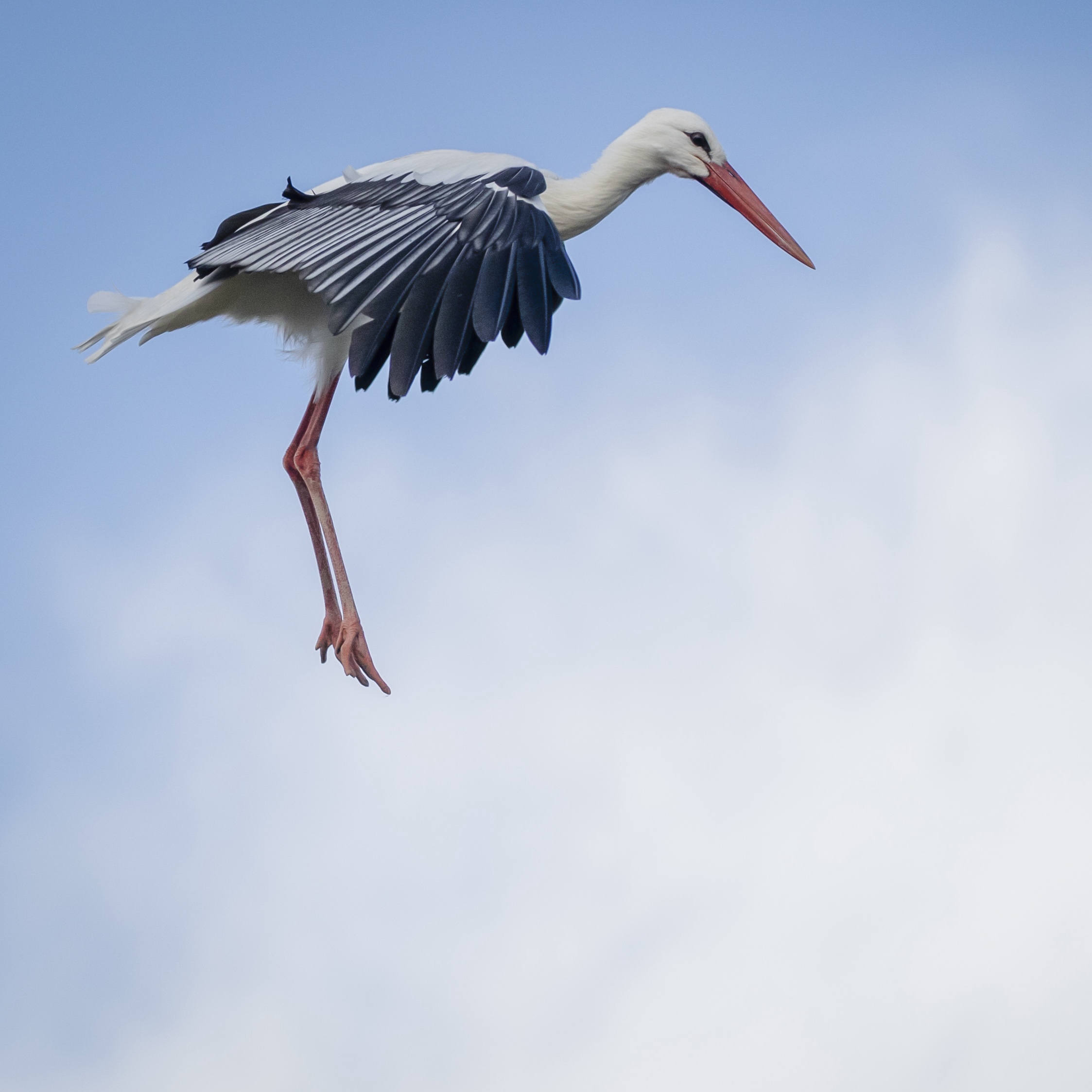 The UK gets its first ‘European stork village’ — and it's in West Sussex
The UK gets its first ‘European stork village’ — and it's in West SussexAlthough the mortality rate among white storks can be up to 90%, the future looks rosy for breeding pairs in southern England.
By Rosie Paterson Published
-
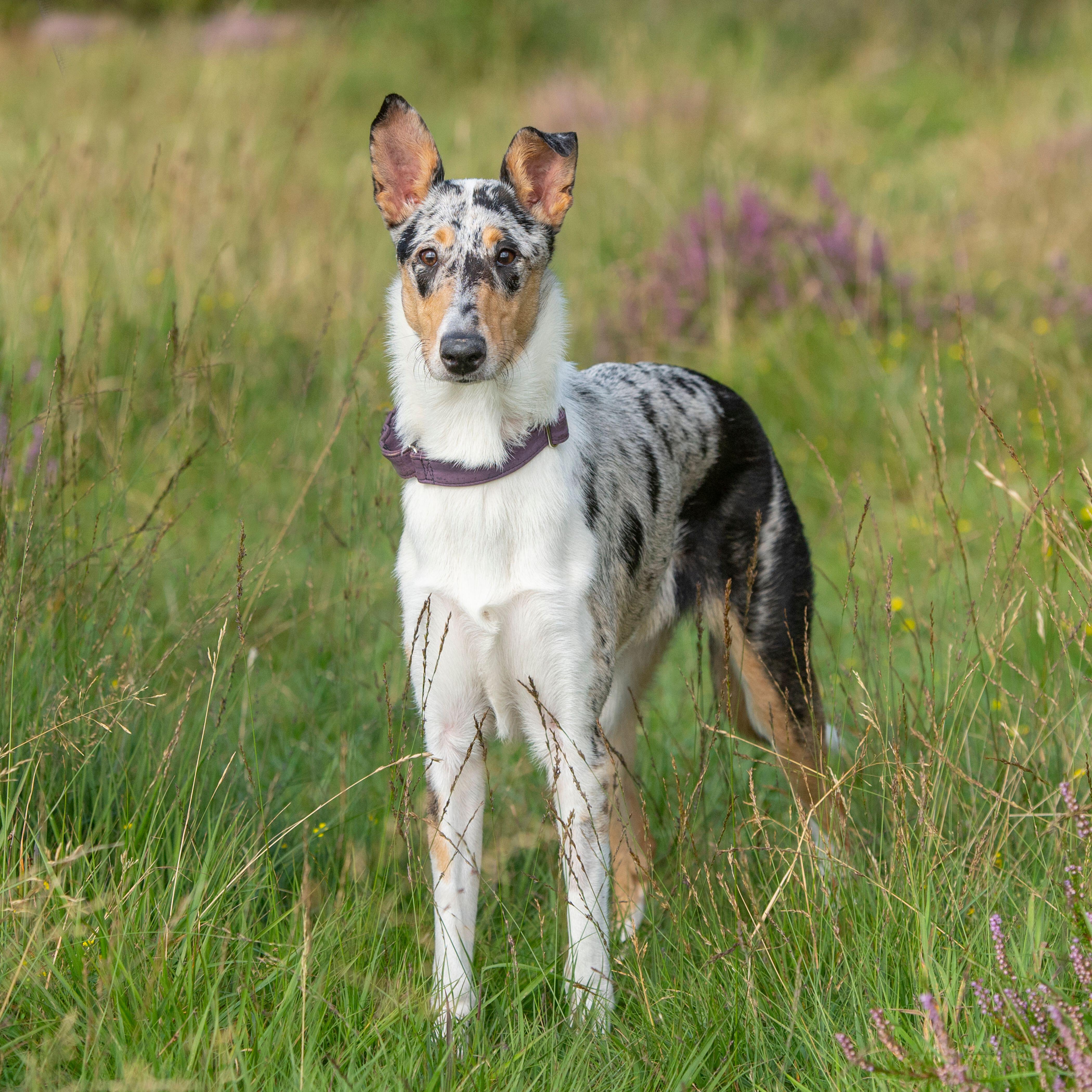 Can't you hear me S.O.S? Our treasured native dog breeds are at risk of extinction
Can't you hear me S.O.S? Our treasured native dog breeds are at risk of extinctionDo you know your Kerry blue terrier from your Lancashire heeler? A simple lack of publicity is often to blame for some of the UK's native dog breeds flying dangerously low under-the-radar.
By Victoria Marston Published